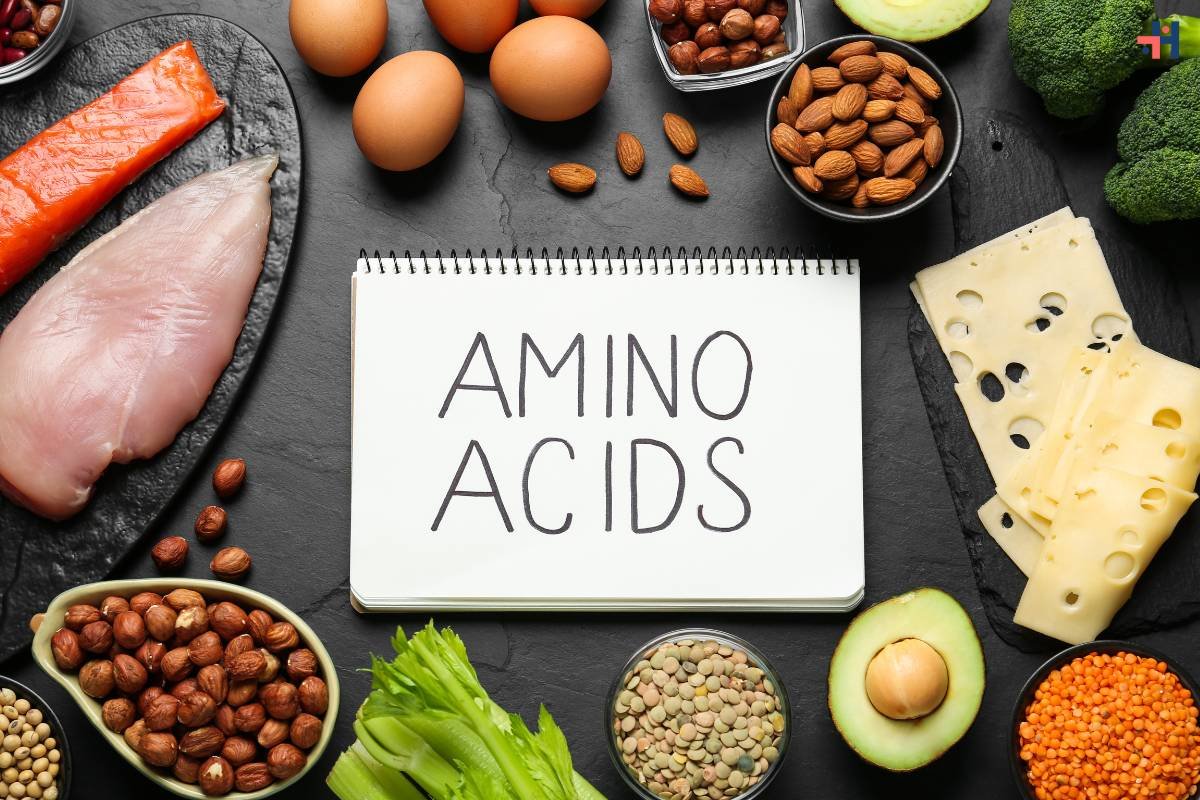Amino acids are the fundamental molecules that constitute proteins, the essential macromolecules responsible for numerous biological processes in living organisms. The classification of amino acids is pivotal in comprehending their diverse functions and significance in maintaining optimal health and well-being. In this comprehensive guide, we will delve deeper into the classification of amino acids, exploring their structural properties, functional roles, and importance in biological systems.
What are Amino Acids?
Amino acids are organic compounds comprised of carbon, hydrogen, oxygen, and nitrogen atoms. They are characterized by a central carbon atom (known as the alpha carbon) bonded to four different groups: a hydrogen atom, an amino group (NH2), a carboxyl group (COOH), and a variable side chain or R group. The unique side chain differentiates each amino acid, contributing to its specific chemical properties and biological functions.
Classification of Amino Acids

Amino acids are classified based on various criteria, including the properties of their side chains, the presence of functional groups, and their nutritional significance. Let’s explore the primary classification schemes for amino acids:
1. Based on Side Chain Polarity:
Classification of amino acids can be categorized into three groups based on the polarity of their side chains:
- Nonpolar (Hydrophobic) Amino Acids: These amino acids have side chains composed of hydrocarbon groups and are insoluble in water. Examples include glycine, alanine, valine, leucine, isoleucine, proline, methionine, and phenylalanine.
- Polar (Hydrophilic) Amino Acids: Amino acids with polar side chains contain functional groups capable of forming hydrogen bonds with water molecules. This group includes serine, threonine, cysteine, tyrosine, asparagine, glutamine, and tryptophan.
- Electrically Charged Amino Acids: These amino acids possess ionizable side chains that impart either a positive (basic) or negative (acidic) charge to the molecule. Basic amino acids include lysine, arginine, and histidine, while acidic amino acids comprise aspartic acid and glutamic acid.
2. Based on Essentiality:
Amino acids are also classified according to their essentiality, which refers to whether they must be obtained from the diet or can be synthesized by the body. Essential amino acids cannot be synthesized endogenously and must be obtained from dietary sources. Examples of essential amino acids include histidine, isoleucine, leucine, lysine, methionine, phenylalanine, threonine, tryptophan, and valine.
3. Based on Chemical Structure:
Amino acids can be further categorized based on their chemical structure:
- Aliphatic Amino Acids: These amino acids have aliphatic side chains, which can be either straight or branched chains of carbon atoms. Examples include glycine, alanine, valine, leucine, isoleucine, and proline.
- Aromatic Amino Acids: Aromatic amino acids contain a benzene ring in their side chains, imparting unique chemical properties. Examples include phenylalanine, tyrosine, and tryptophan.
- Sulfur-Containing Amino Acids: Amino acids with sulfur-containing side chains play essential roles in protein structure and function. Examples include cysteine and methionine.
4. Based on Metabolic Fate:

Amino acids can be classified based on their metabolic fate within the body:
- Glucogenic Amino Acids: These amino acids can be converted into glucose through gluconeogenesis and contribute to energy production. Examples include alanine, serine, glycine, cysteine, and threonine.
- Ketogenic Amino Acids: Ketogenic amino acids are catabolized to produce ketone bodies, which serve as alternative energy sources, particularly during periods of fasting or low carbohydrate intake. Examples include leucine and lysine.
- Glucogenic and Ketogenic Amino Acids: Some amino acids have both glucogenic and ketogenic properties, contributing to both glucose and ketone body synthesis. Examples include isoleucine, phenylalanine, tryptophan, and tyrosine.
5. Based on Functionality:
Amino acids can also be classified based on their functional roles in protein structure and enzymatic activity:
- Structural Amino Acids: Certain amino acids, such as glycine, proline, and hydroxyproline, play critical roles in forming the structural framework of proteins, collagen, and connective tissues.
- Enzymatic Amino Acids: Amino acids like histidine, lysine, and cysteine serve as essential components of enzyme active sites, facilitating catalysis and biochemical reactions in cells.
- Signaling Amino Acids: Some amino acids, including glutamate, gamma-aminobutyric acid (GABA), and glycine, function as neurotransmitters or signaling molecules in the nervous system, regulating neuronal excitability and neurotransmission.
Nutritional Significance of Amino Acids
Amino acids are essential for human health, playing vital roles in protein synthesis, tissue repair, immune function, and hormone regulation. The composition of dietary proteins determines the availability of amino acids for various physiological functions. Inadequate intake of essential amino acids can lead to protein deficiency, impairing growth, development, and overall health. Therefore, consuming a balanced diet rich in high-quality protein sources is crucial for meeting the body’s amino acid requirements.

Applications of Amino Acids
Amino acids find wide-ranging applications in various fields, including medicine, nutrition, agriculture, and biotechnology. Some notable applications include:
- Medical Use: Amino acids are used in medical formulations and dietary supplements to support muscle growth, wound healing, and metabolic function. They are also essential components of intravenous nutrition solutions used in clinical settings.
- Nutritional Supplements: Amino acid supplements are popular among athletes and fitness enthusiasts to enhance muscle recovery, improve exercise performance, and support overall health and well-being.
- Agricultural Use: Amino acids are utilized in agriculture as organic fertilizers and plant growth enhancers to improve crop yield, nutrient uptake, and stress tolerance in plants.
- Biotechnological Applications: Amino acids serve as building blocks for the production of biopharmaceuticals, enzymes, and other biotechnological products
Conclusion:
Understanding the classification of amino acids provides valuable insights into their structural diversity, functional versatility, and physiological significance. By categorizing amino acids based on their properties, essentiality, chemical structure, metabolic fate, and functionality, we gain a deeper appreciation for their roles in biological systems.
Whether serving as the building blocks of proteins, contributing to energy metabolism, or participating in signaling pathways, amino acids play indispensable roles in maintaining health and supporting vital physiological processes. By comprehending the classification of amino acids, we can better understand their contributions to the intricate mechanisms of life and explore their potential applications in various fields, including nutrition, medicine, and biotechnology.









